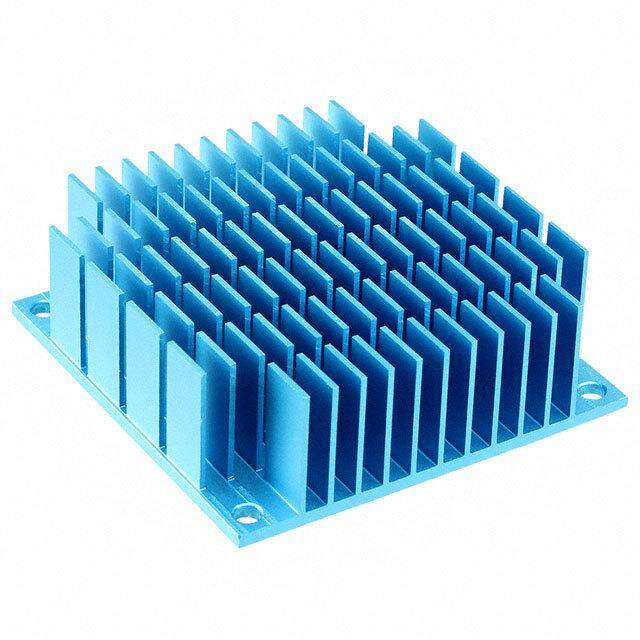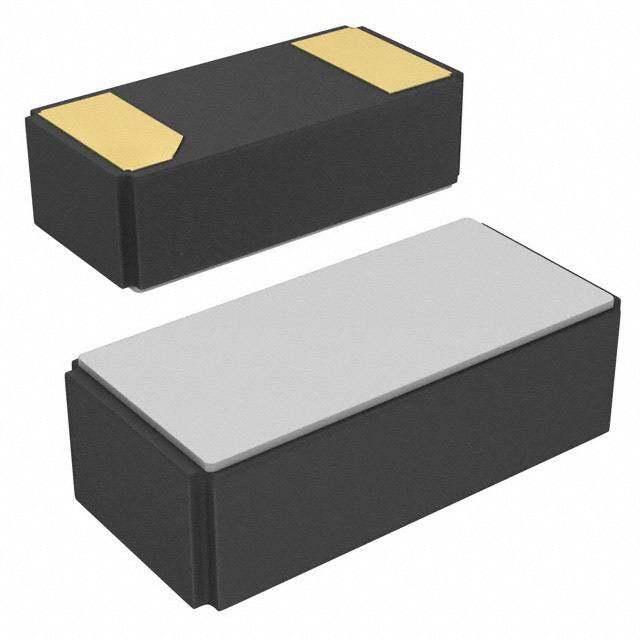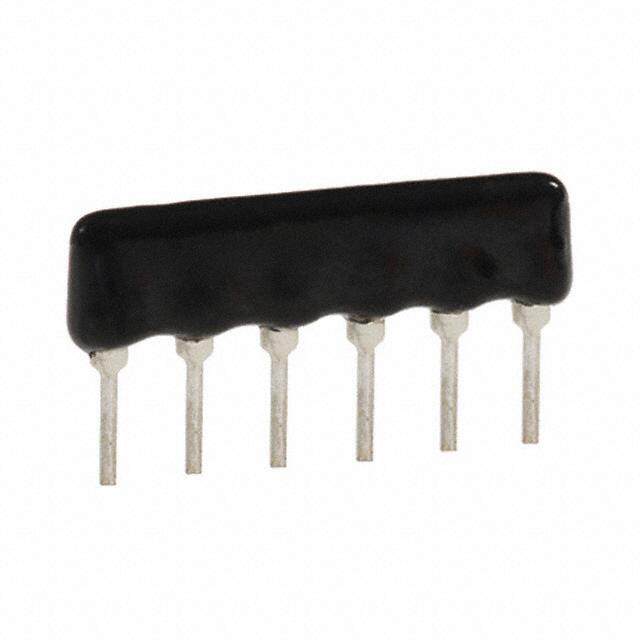ICGOO在线商城 > MCP1602-ADJI/MS
- 型号: MCP1602-ADJI/MS
- 制造商: Microchip
- 库位|库存: xxxx|xxxx
- 要求:
| 数量阶梯 | 香港交货 | 国内含税 |
| +xxxx | $xxxx | ¥xxxx |
查看当月历史价格
查看今年历史价格
MCP1602-ADJI/MS产品简介:
ICGOO电子元器件商城为您提供MCP1602-ADJI/MS由Microchip设计生产,在icgoo商城现货销售,并且可以通过原厂、代理商等渠道进行代购。 提供MCP1602-ADJI/MS价格参考以及MicrochipMCP1602-ADJI/MS封装/规格参数等产品信息。 你可以下载MCP1602-ADJI/MS参考资料、Datasheet数据手册功能说明书, 资料中有MCP1602-ADJI/MS详细功能的应用电路图电压和使用方法及教程。
| 参数 | 数值 |
| 产品目录 | 集成电路 (IC)半导体 |
| 描述 | IC REG BUCK SYNC ADJ 0.5A 8MSOP稳压器—开关式稳压器 20MHz 05A Synch-Buck PFM/PWM Reg |
| 产品分类 | |
| 品牌 | Microchip Technology |
| 产品手册 | |
| 产品图片 |
|
| rohs | 符合RoHS无铅 / 符合限制有害物质指令(RoHS)规范要求 |
| 产品系列 | 电源管理 IC,稳压器—开关式稳压器,Microchip Technology MCP1602-ADJI/MS- |
| 数据手册 | http://www.microchip.com/mymicrochip/filehandler.aspx?ddocname=en532603http://www.microchip.com/mymicrochip/filehandler.aspx?ddocname=en023833 |
| 产品型号 | MCP1602-ADJI/MS |
| PWM类型 | - |
| 产品目录页面 | |
| 产品种类 | 稳压器—开关式稳压器 |
| 供应商器件封装 | 8-MSOP |
| 包装 | 管件 |
| 同步整流器 | 是 |
| 商标 | Microchip Technology |
| 安装类型 | 表面贴装 |
| 安装风格 | SMD/SMT |
| 封装 | Tube |
| 封装/外壳 | 8-TSSOP,8-MSOP(0.118",3.00mm 宽) |
| 封装/箱体 | MSOP-8 |
| 工作温度 | -40°C ~ 85°C |
| 工厂包装数量 | 100 |
| 开关频率 | 2 MHz |
| 最大输入电压 | 5.5 V |
| 标准包装 | 100 |
| 电压-输入 | 2.7 V ~ 5.5 V |
| 电压-输出 | 0.8 V ~ 4.5 V |
| 电流-输出 | 500mA |
| 类型 | Step-Down DC/DC Converter |
| 输出数 | 1 |
| 输出电压 | 800 mV to 4.5 V |
| 输出电流 | 500 mA |
| 输出类型 | 可调式 |
| 频率-开关 | 2MHz |

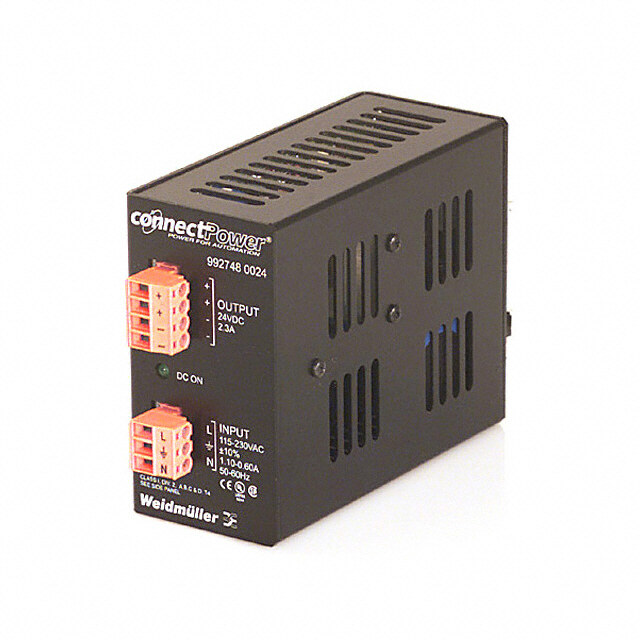
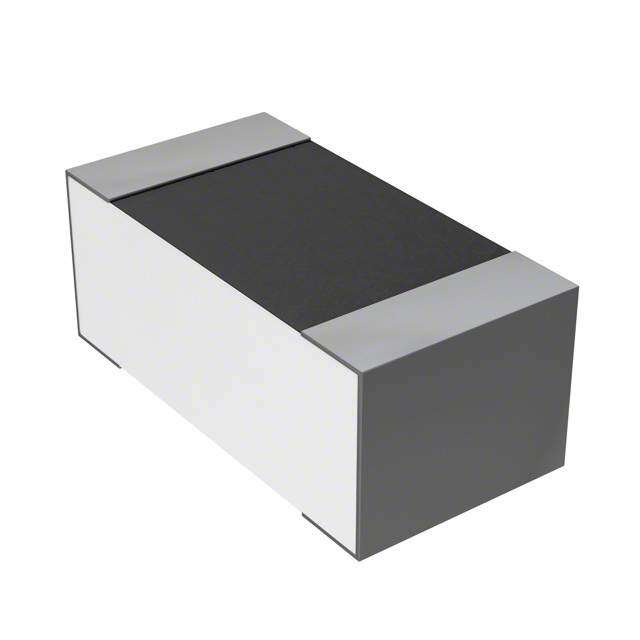

.jpg)

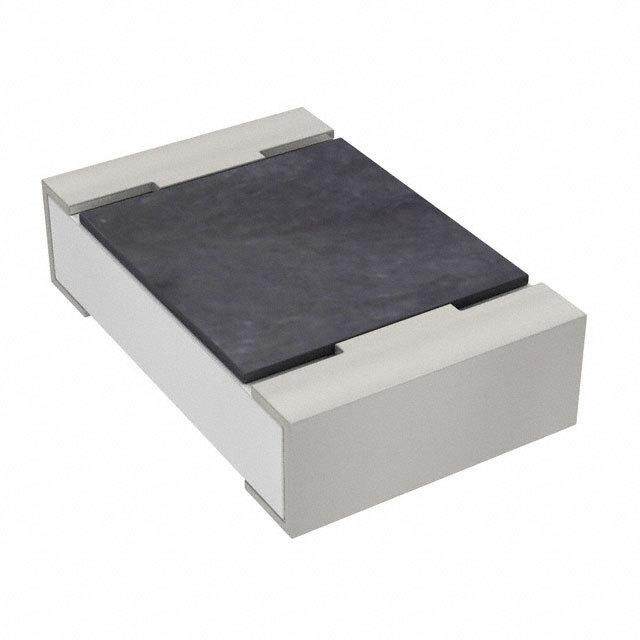
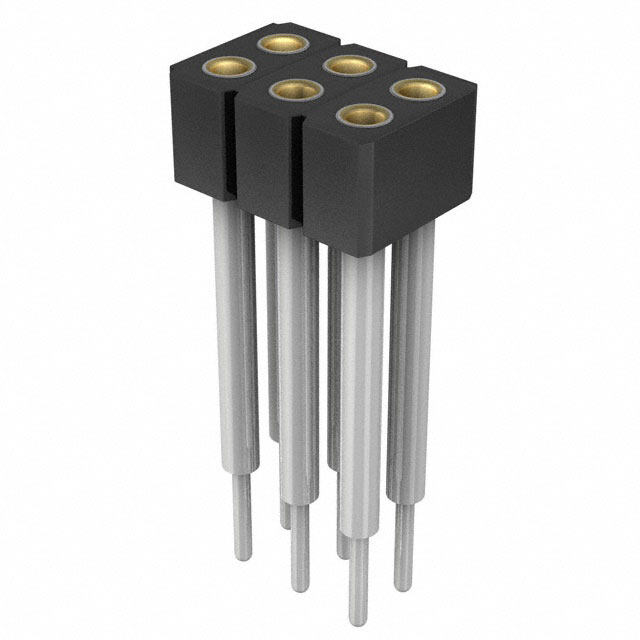
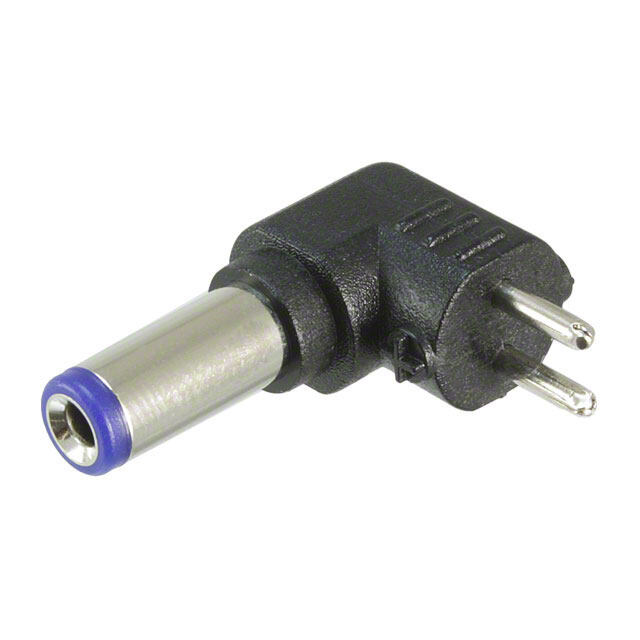

- 商务部:美国ITC正式对集成电路等产品启动337调查
- 曝三星4nm工艺存在良率问题 高通将骁龙8 Gen1或转产台积电
- 太阳诱电将投资9.5亿元在常州建新厂生产MLCC 预计2023年完工
- 英特尔发布欧洲新工厂建设计划 深化IDM 2.0 战略
- 台积电先进制程称霸业界 有大客户加持明年业绩稳了
- 达到5530亿美元!SIA预计今年全球半导体销售额将创下新高
- 英特尔拟将自动驾驶子公司Mobileye上市 估值或超500亿美元
- 三星加码芯片和SET,合并消费电子和移动部门,撤换高东真等 CEO
- 三星电子宣布重大人事变动 还合并消费电子和移动部门
- 海关总署:前11个月进口集成电路产品价值2.52万亿元 增长14.8%
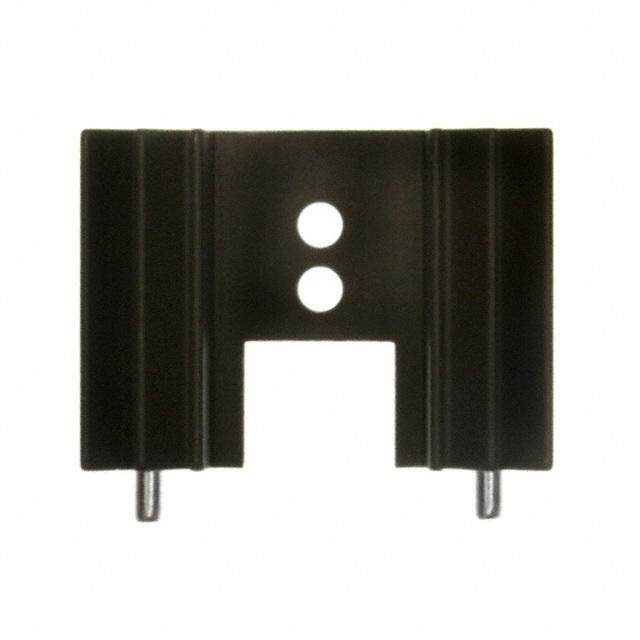
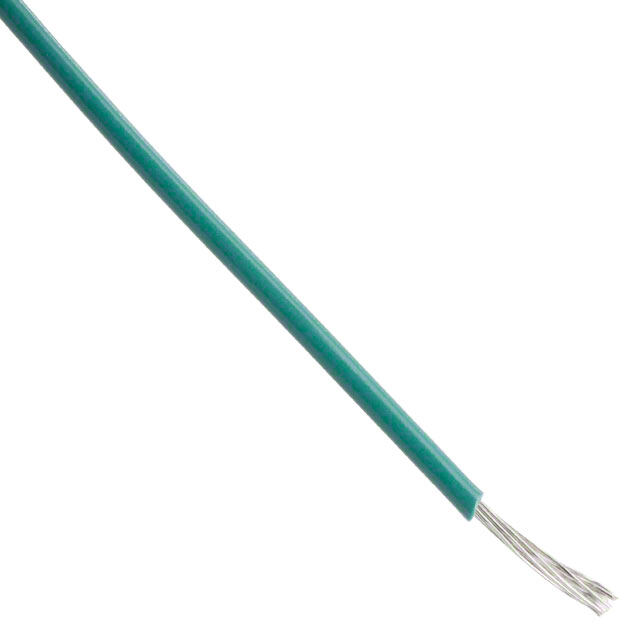

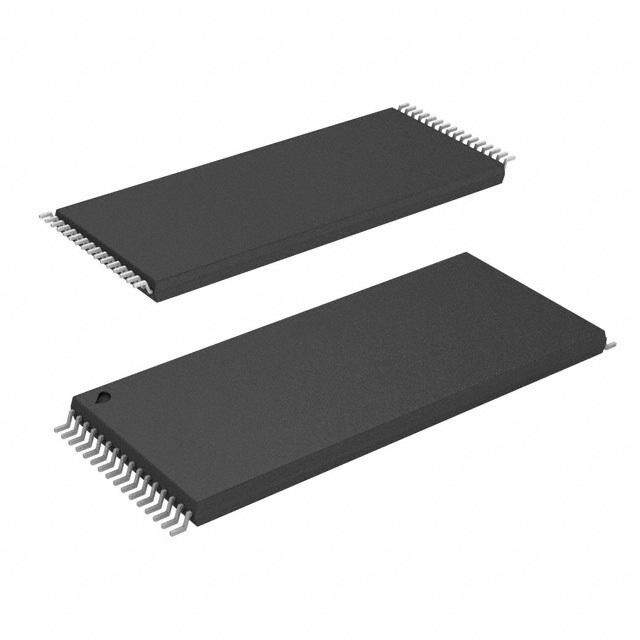
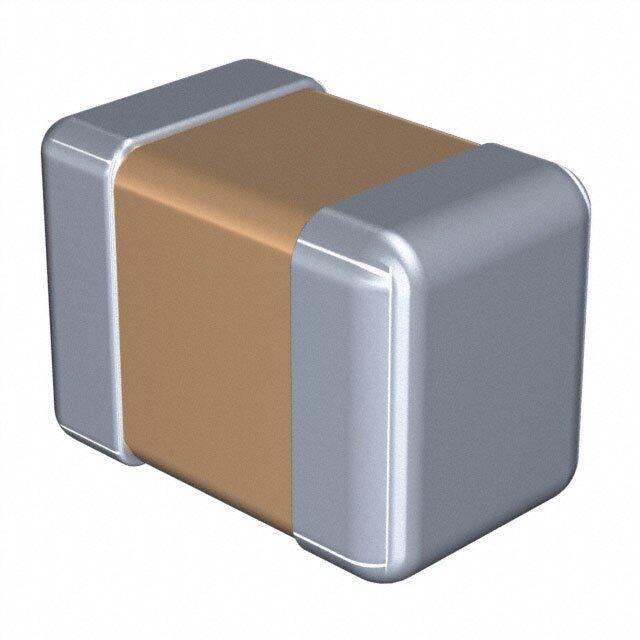
PDF Datasheet 数据手册内容提取
MCP1602 2.0 MHz, 500 mA Synchronous Buck Regulator with Power-Good Features General Description • Over 90% Typical Efficiency The MCP1602 is a high efficient, fully integrated • Output Current: Up To 500mA 500mA synchronous buck regulator with a power- good monitor. The 2.7V to 5.5V input voltage range and • Power-Good Output with 262ms Delay low quiescent current (45µA, typical) makes the • Low Quiescent Current: 45µA (typical) MCP1602 ideally suited for applications powered from • Low Shutdown Current: 0.05µA (typical) 1-cell Li-Ion or 2-cell/3-cell NiMH/NiCd batteries. • Automatic PWM to PFM Mode Transition At heavy loads, the MCP1602 operates in the 2.0MHz • Adjustable Output Voltage: fixed frequency PWM mode which provides a low - 0.8V to 4.5V noise, low output ripple, small-size solution. When the • Fixed Output Voltage: load is reduced to light levels, the MCP1602 automatically changes operation to a PFM mode to - 1.2V, 1.5V, 1.8V, 2.5V, and 3.3V minimize quiescent current draw from the battery. No • 2.0MHz Fixed-Frequency PWM (Heavy Load) intervention is necessary for a smooth transition from • Internally Compensated one mode to another. These two modes of operation • Undervoltage Lockout (UVLO) allow the MCP1602 to achieve the highest efficiency • Overtemperture Protection over the entire operating current range. • Overcurrent Protection The open-drain power-good feature of the MCP1602 • Space Saving Packages: monitors the output voltage and provides indication - 8-Lead MSOP when the output voltage is within 94% (typical) of the regulation value. The typical 2% hystereses in the - 8-Lead 3x3 DFN power-good transition threshold as well as a 262ms(typical) delay time ensures accurate power- Applications good signaling. • Cellular Telephones The MCP1602 is available in either the 8-pin DFN or • Portable Computers MSOP package. It is also available with either an • Organizers / PDAs adjustable or fixed output voltage. The available fixed output voltage options are 1.2V, 1.5V, 1.8V, 2.5V, and • USB Powered Devices 3.3V. • Digital Cameras Additional protection features include: UVLO, • Portable Equipment overtemperature, and overcurrent protection. • +5V or +3.3V Distributed Systems Package Types MSOP-8 3x3 DFN-8 1 SHDN PGND 8 SHDN 1 8 PGND 2 VCC LX 7 VCC 2 7 LX 3 PG VIN 6 PG 3 6 VIN 4 AGNDVOUT/VFB 5 AGND 4 5 VOUT/VFB © 2007 Microchip Technology Inc. DS22061A-page 1
MCP1602 Typical Application Circuit 4.7µH VIN 6 VIN LX 7 VOUT 2.7V to 4.5V 1.5V @ 500mA 4.7µF 10Ω 4.7µF 2 VCC VFB 5 4 AGND PGND 8 0.1µF 1 SHDN PG 3 MCP1602 R PULLUP ON Processor OFF Reset V IN DS22061A-page 2 © 2007 Microchip Technology Inc.
MCP1602 Functional Block Diagram V CC Band VREF Soft Start UVLO Gap V IN Thermal UVLO Shutdown SHDN ILIMPWM TSD ILIMPFM IPEAKPWM IPK Limit Disable Switcher IPEAKPFM Slope Comp OSC -ILPK S Q POFF NOFF L X Switch Drive R Q Logic and Timing PWM/PFM PFM Error Amp PWM/PFM P GND Logic VREF IPEAKPFM IPEAKPWM PWM Error Amp EA -ILPK -IPK Limit VREF VREF VCC PG OV Threshold PG Generator with Delay A V / V GND FB OUT UV Threshold VOUT © 2007 Microchip Technology Inc. DS22061A-page 3
MCP1602 1.0 ELECTRICAL † Notice: Stresses above those listed under "Maximum Ratings" may cause permanent damage to the device. This is CHARACTERISTICS a stress rating only and functional operation of the device at those or any other conditions above those indicated in the Absolute Maximum Ratings † operational sections of this specification is not intended. Exposure to maximum rating conditions for extended periods VIN - AGND......................................................................+6.0V may affect device reliability. All Other I/O..............................(A - 0.3V) to (V + 0.3V) GND IN LX to P .............................................-0.3V to (V + 0.3V) GND IN Output Short Circuit Current..................................Continuous Power Dissipation (Note6)..........................Internally Limited Storage Temperature....................................-65oC to +150oC Ambient Temp. with Power Applied................-40oC to +85oC Operating Junction Temperature..................-40oC to +125oC ESD Protection On All Pins: HBM..............................................................................3kV MM...............................................................................200V DC CHARACTERISTICS Electrical Characteristics: Unless otherwise indicated, V = 3.6V, C = C = 4.7µF, L = 4.7µH, IN OUT IN V (ADJ) = 1.8V, I =100mA, T = +25°C.Boldface specifications apply for the T range of -40oC to +85oC. OUT OUT A A Parameters Sym Min Typ Max Units Conditions Input Characteristics Input Voltage V 2.7 — 5.5 V Note1 IN Maximum Output Current I 500 — — mA Note1 OUT Shutdown Current I — 0.05 1 µA SHDN = GND IN_SHDN Quiescent Current I — 45 60 µA SHDN = V , I = 0mA Q IN OUT Shutdown/UVLO/Thermal Shutdown Characteristics SHDN, Logic Input Voltage Low V — — 15 %V V = 2.7V to 5.5V IL IN IN SHDN, Logic Input Voltage High V 45 — — %V V = 2.7V to 5.5V IH IN IN SHDN, Input Leakage Current V -1.0 ±0.1 1.0 µA V = 2.7V to 5.5V, SHDN=A L_SHND IN GND Undervoltage Lockout UVLO 2.40 2.55 2.70 V V Falling IN Undervoltage Lockout Hystere- UVLO — 200 — mV HYS sis Thermal Shutdown T — 150 — °C Note5, Note6 SHD Thermal Shutdown Hysteresis T — 10 — °C Note5, Note6 SHD-HYS Output Characteristics Adjustable Output Voltage V 0.8 — 4.5 V Note2 OUT Range Reference Feedback Voltage V — 0.8 — V FB Feedback Input Bias Current I — -1.5 — nA VFB Note 1: The minimum V has to meet two conditions: V ≥ 2.7V and V ≥ V + 0.5V. IN IN IN OUT 2: Reference Feedback Voltage Tolerance applies to adjustable output voltage setting. 3: V is the output voltage setting. R 4: Regulation is measured at a constant junction temperature using low duty cycle pulse testing. Load regulation is tested over a load range of 0.1mA to the maximum specified output current. Changes in output voltage due to heating effects are covered by the thermal regulation specification. 5: The maximum allowable power dissipation is a function of ambient temperature, the maximum allowable temperature and the thermal resistance from junction to air (i.e. T , T , θ ). Exceeding the maximum A J JA allowable power dissipation causes the device to initiate thermal shutdown. 6: The internal MOSFET switches have an integral diode from the L pin to the V pin, and from the L pin X IN X to the GND pin. In cases where these diodes are forward-biased, the package power dissipation limits must be adhered too. Thermal protection is not able to limit the junction temperature for these cases. 7: The current limit threshold is a cycle-by-cycle current limit. DS22061A-page 4 © 2007 Microchip Technology Inc.
MCP1602 DC CHARACTERISTICS (CONTINUED) Electrical Characteristics: Unless otherwise indicated, V = 3.6V, C = C = 4.7µF, L = 4.7µH, IN OUT IN V (ADJ) = 1.8V, I =100mA, T = +25°C.Boldface specifications apply for the T range of -40oC to +85oC. OUT OUT A A Parameters Sym Min Typ Max Units Conditions Output Voltage Tolerance Fixed V -2.5 V +2.5 % Note3 OUT R Line Regulation V — 0.3 — %/V V = V + 1V to 5.5V, LINE- IN R I =100mA REG OUT Load Regulation V — 0.4 — % V =V +1.5V, LOAD- IN R I =100mAto500mA, Note1 REG LOAD Internal Oscillator Frequency F 1.6 2.0 2.4 MHz OSC Start Up Time T — 0.5 — ms T =10%to90% SS R R P-Channel R — 450 — mΩ I =100mA DSon DSon-P P R N-Channel R — 450 — mΩ I =100mA DSon DSon-N N L Pin Leakage Current I -1.0 ±0.01 1.0 µA SHDN=0V, V =5.5V, L =0V, X LX IN X L =5.5V X Positive Current Limit Threshold +I — 700 — mA Note7 LX(MAX) Power-Good (PG) Voltage Range V 1.0 — 5.5 V T =0°C to +70°C PG A 1.2 5.5 T =-40°C to +85°C A V ≤2.7V, I =100µA IN SINK PG Threshold High V — 94 96 % of On Rising V TH_H OUT V OUT PG Threshold Low V 89 92 — % of On Falling V TH_L OUT V OUT PG Threshold Hysteresis V — 2 — % of TH_HYS V OUT PG Threshold Tempco ΔV /ΔT — 30 — ppm/°C TH PG Delay t — 165 — µs V =(V +100mV) to RPD OUT TH_H (V -100mV) TH_L PG Active Time-out Period t 140 262 560 ms V =(V -100mV) to RPU OUT TH_L (V +100mV), I =1.2mA TH_H SINK PG Output Voltage Low PG_V — — 0.2 V V =V -100mV, OL OUT TH_L I =1.2mA, V >2.7V PG IN I =100µA, 1.0<V <2.7V PG IN Note 1: The minimum V has to meet two conditions: V ≥ 2.7V and V ≥ V + 0.5V. IN IN IN OUT 2: Reference Feedback Voltage Tolerance applies to adjustable output voltage setting. 3: V is the output voltage setting. R 4: Regulation is measured at a constant junction temperature using low duty cycle pulse testing. Load regulation is tested over a load range of 0.1mA to the maximum specified output current. Changes in output voltage due to heating effects are covered by the thermal regulation specification. 5: The maximum allowable power dissipation is a function of ambient temperature, the maximum allowable temperature and the thermal resistance from junction to air (i.e. T , T , θ ). Exceeding the maximum A J JA allowable power dissipation causes the device to initiate thermal shutdown. 6: The internal MOSFET switches have an integral diode from the L pin to the V pin, and from the L pin X IN X to the GND pin. In cases where these diodes are forward-biased, the package power dissipation limits must be adhered too. Thermal protection is not able to limit the junction temperature for these cases. 7: The current limit threshold is a cycle-by-cycle current limit. © 2007 Microchip Technology Inc. DS22061A-page 5
MCP1602 TEMPERATURE SPECIFICATIONS Electrical Specifications: Unless otherwise indicated, all limits are specified for: V +2.7Vto5.5V IN Parameters Sym Min Typ Max Units Conditions Temperature Ranges Operating Junction Temperature T -40 — +125 °C Steady State J Range Storage Temperature Range T -65 — +150 °C A Maximum Junction Temperature T — — +150 °C Transient J Package Thermal Resistances Thermal Resistance, 8L-MSOP θ — 211 — °C/W Typical 4-layer Board with JA Internal Ground Plane Thermal Resistance, 8L-3x3 DFN θ — 60 — °C/W Typical 4-layer Board with JA Internal Ground Plane and 2-Vias in Thermal Pad DS22061A-page 6 © 2007 Microchip Technology Inc.
MCP1602 2.0 TYPICAL PERFORMANCE CURVES Note: The graphs and tables provided following this note are a statistical summary based on a limited number of samples and are provided for informational purposes only. The performance characteristics listed herein are not tested or guaranteed. In some graphs or tables, the data presented may be outside the specified operating range (e.g., outside specified power supply range) and therefore outside the warranted range. Note: Unless otherwise indicated, V =SHDN=3.6V, C =C =4.7µF, L =4.7µH, V (ADJ)=1.8V, I =100mA, IN OUT IN OUT LOAD T =+25°C. Adjustable or fixed output voltage options can be used to generate the Typical Performance Characteristics. A 60 55 µA) 55 VOUT = 1.8V µA) 50 TA = +25°C TA = +90°C nt ( 50 VIN = 5.5V nt ( nt Curre 45 VIN = 3.6V nt Curre 4405 TA = -40°C e 40 e uiesc 35 VIN = 4.2V uiesc 35 Q Q 30 30 -40 -25 -10 5 20 35 50 65 80 95 110 125 2.7 3.05 3.4 3.75 4.1 4.45 4.8 5.15 5.5 Ambient Temperature (oC) Input Voltage (V) FIGURE 2-1: I vs. Ambient Temperature. FIGURE 2-4: I vs. Input Voltage. Q Q 100 100 95 VOUT = 1.2V 90 VIN = 3.6V 80 %) 90 IOUT = 100 mA %) VIN = 3.0V Efficiency ( 788505 IOUT = 300 mA IOUT = 500 mA Efficiency ( 45670000 70 30 VIN = 4.2V 65 VOUT = 1.2V 20 3.0 3.2 3.4 3.6 3.8 4.0 4.2 0.1 1 10 100 1000 Input Voltage (V) Output Current (mA) FIGURE 2-2: Efficiency vs. Input Voltage FIGURE 2-5: Efficiency vs. Output Load (V = 1.2V). (V = 1.2V). OUT OUT 100 100 95 IOUT = 100 mA VOUT = 1.8V 90 VIN = 3.6V Efficiency (%) 889050 IOUT = 300 mA IOUT = 500 mA Efficiency (%) 56780000 VIN = 3.0V 40 75 VIN = 4.2V 30 70 VOUT = 1.8V 20 3.0 3.2 3.4 3.6 3.8 4.0 4.2 0.1 1 10 100 1000 Input Voltage (V) Output Current (mA) FIGURE 2-3: Efficiency vs. Input Voltage FIGURE 2-6: Efficiency vs. Output Load (V = 1.8V). (V = 1.8V). OUT OUT © 2007 Microchip Technology Inc. DS22061A-page 7
MCP1602 Typical Performance Curves (Continued) Note: Unless otherwise indicated, V =SHDN=3.6V, C =C =4.7µF, L =4.7µH, V (ADJ)=1.8V, I =100mA, IN OUT IN OUT LOAD T =+25°C. Adjustable or fixed output voltage options can be used to generate the Typical Performance Characteristics. A 100.0 100 97.5 VOUT = 3.3V 90 VIN = 4.2V 80 %) 95.0 IOUT = 100 mA %) ncy ( 92.5 IOUT = 300 mA ncy ( 6700 e e ci ci 50 Effi 90.0 IOUT = 500 mA Effi 40 87.5 30 VIN = 5.5V VOUT = 3.3V 85.0 20 4.2 4.4 4.6 4.8 5.0 5.2 5.4 0.1 1 10 100 1000 Input Voltage (V) Output Current (mA) FIGURE 2-7: Efficiency vs. Input Voltage FIGURE 2-10: Efficiency vs. Output Load (V = 3.3V). (V = 3.3V). OUT OUT 340 96 ms) 320 )OUT 95 ut ( 300 of V 94 PG Threshold High me-O 280 d (% 9923 Ti 260 ol Active 240 Thresh 9901 PG Threshold Low G 220 G 89 P P 200 88 -40 -25 -10 5 20 35 50 65 80 95 110125 -40 -25 -10 5 20 35 50 65 80 95 110125 Ambient Temperature (°C) Ambient Temperature (°C) FIGURE 2-8: PG Active Time-out vs. FIGURE 2-11: PG Threshold Voltage vs. Ambient Temperature. Ambient Temperature. 0.832 1.85 ge (V) 0.828 e (V) 1.84 Volta 0.824 oltag 1.83 back 0.820 put V d ut 1.82 ee 0.816 O F 0.812 1.81 0 5 0 5 0 5 0 5 0 5 0 5 4 2 1 2 3 5 6 8 9 1 2 0 50 100 150 200 250 300 350 400 450 500 - - - 1 1 Ambient Temperature (°C) Output Current (mA) FIGURE 2-9: Feedback Voltage vs. FIGURE 2-12: Output Voltage vs. Load Ambient Temperature. Current (V = 1.8V). OUT DS22061A-page 8 © 2007 Microchip Technology Inc.
MCP1602 Typical Performance Curves (Continued) Note: Unless otherwise indicated, V =SHDN=3.6V, C =C =4.7µF, L =4.7µH, V (ADJ)=1.8V, I =100mA, IN OUT IN OUT LOAD T =+25°C. Adjustable or fixed output voltage options can be used to generate the Typical Performance Characteristics. A 2.00 2.10 z) Hz) y (MH 1.98 cy (M 2.05 enc 1.96 uen 2.00 u q q e g Fre 1.94 ng Fr 1.95 Switchin 1.92 Switchi 11..8950 1.90 2.70 3.05 3.40 3.75 4.10 4.45 4.80 5.15 5.50 -40 -25 -10 5 20 35 50 65 80 95 110125 Ambient Temperature (°C) Input Voltage (V) FIGURE 2-13: Switching Frequency vs. FIGURE 2-16: Switching Frequency vs. Ambient Temperature. Input Voltage. 0.6 0.7 sistance (Ω) 00..45 P-Channel sistance (Ω) 00..56 P-Channel witch Re 0.3 N-Channel witch Re 00..34 N-Channel S S 0.2 0.2 2.70 3.05 3.40 3.75 4.10 4.45 4.80 5.15 5.50 -40 -25 -10 5 20 35 50 65 80 95 110 125 Input Voltage (V) Ambient Temperature (°C) FIGURE 2-14: Switch Resistance vs. Input FIGURE 2-17: Switch Resistance vs. Voltage. Ambient Temperature. FIGURE 2-15: Output Voltage Startup FIGURE 2-18: Heavy Load Switching Waveform. Waveform. © 2007 Microchip Technology Inc. DS22061A-page 9
MCP1602 Typical Performance Curves (Continued) Note: Unless otherwise indicated, V =SHDN=3.6V, C =C =4.7µF, L =4.7µH, V (ADJ)=1.8V, I =100mA, IN OUT IN OUT LOAD T =+25°C. Adjustable or fixed output voltage options can be used to generate the Typical Performance Characteristics. A FIGURE 2-19: Light Load Switching FIGURE 2-21: Output Voltage Line Step Waveform. Response vs. Time. FIGURE 2-20: Output Voltage Load Step FIGURE 2-22: Power-Good Output Timing. Response vs. Time. DS22061A-page 10 © 2007 Microchip Technology Inc.
MCP1602 3.0 PIN DESCRIPTIONS The descriptions of the pins are listed in Table3-1. TABLE 3-1: PIN FUNCTION TABLE MSOP DFN Sym Description 1 1 SHDN Shutdown Input Pin 2 2 V Analog Input Supply Voltage Pin CC 3 3 PG Power Good Output Pin 4 4 A Analog Ground Pin GND 5 5 V /V Feedback Voltage (Adjustable Version) / Output Voltage (Fixed Version) Pin FB OUT 6 6 V Input Supply Voltage Pin IN 7 7 L Buck Inductor Output Pin X 8 8 P Power Ground Pin GND — Exposed EP For the DFN package, the center exposed pad is a thermal path to remove Pad heat from the device. Electrically this pad is at ground potential and should be connected to A GND 3.1 Shutdown Control Input Pin 3.6 Power Supply Input Voltage Pin (SHDN) (V ) IN The SHDN pin is a logic-level input used to enable or V is the buck regulator power input supply pin. IN disable the device. A logic high (>45% of V ) will Connect a variable input voltage source to V . IN IN enable the regulator output. A logic-low (<15% of V ) IN will ensure that the regulator is disabled. 3.7 Buck Inductor Output Pin (LX) 3.2 Analog Input Supply Voltage Pin Connect LX directly to the buck inductor. This pin carries large signal-level current; all connections (V ) CC should be made as short as possible. The V pin provides bias for internal analog functions. CC This voltage is derived by filtering the V supply. 3.8 Power Ground Pin (P ) IN GND 3.3 Power-Good Output Pin (PG) Connect all large signal level ground returns to PGND. These large signal level ground traces should have a PG is an output level indicating that the output voltage small loop area and length to prevent coupling of is within 94% of regulation. The PG output is configured switching noise to sensitive traces. as an open-drain output. 3.9 Exposed Metal Pad (EP) 3.4 Analog Ground Pin (A ) GND For the DFN package, connect the Exposed Pad to AGND is the analog ground connection. Tie AGND to the AGND, with vias into the AGND plane. This connection to analog portion of the ground plane (AGND). See the the AGND plane will aid in heat removal from the physical layout information in the Section5.8 “PCB package. Layout Information” section for ground recommenda- tions. 3.5 Output Voltage Sense Pin (V / FB V ) OUT For the adjustable output voltage options, connect the center of the output voltage divider to the V pin. For FB fixed-output voltage options, connect the output of the buck regulator to this pin (V ). OUT © 2007 Microchip Technology Inc. DS22061A-page 11
MCP1602 4.0 DETAILED DESCRIPTION 4.1 Device Overview PFM-to-PWM mode transition is initiated for any of the following conditions: The MCP1602 is a synchronous buck regulator with a • Continuous device switching power-good signal. The device operates in a Pulse Frequency Modulation (PFM) mode or a Pulse Width • Output voltage has dropped out of regulation Modulation (PWM) mode to maximize system 4.2.2 LIGHT LOAD, PFM MODE efficiency over the entire operating current range. Capable of operating from a 2.7V to 5.5V input voltage During light load conditions, the MCP1602 operates in source, the MCP1602 can deliver 500mA of a PFM mode. When the MCP1602 enters this mode, it continuous output current. begins to skip pulses to minimize unnecessary quiescent current draw by reducing the number of When using the MCP1602, the PCB area required for a complete step-down converter is minimized since switching cycles per second. The typical quiescent both the main P-Channel MOSFET and the synchro- current draw for this device is 45µA. nous N-Channel MOSFET are integrated. Also while in PWM-to-PFM mode transition is initiated for any of the PWM mode, the device switches at a constant following conditions: frequency of 2.0MHz (typical) which allow for small fil- • Discontinuous inductor current is sensed for a set tering components. Both fixed and adjustable output duration voltage options are available. The fixed voltage options • Inductor peak current falls below the transition (1.2V, 1.5V, 1.8V, 2.5V, 3.3V) do not require an external threshold limit voltage divider which further reduces the required circuit board footprint. The adjustable output voltage 4.3 Power-Good (PG) options allow for more flexibility in the design, but require an external voltage divider. The open-drain power-good (PG) circuitry monitors the Additionally the device features undervoltage lockout regulated output voltage. A fixed delay time of (UVLO), overtemperature shutdown, overcurrent approximately 262ms is generated once the output protection, and enable/disable control. voltage is above the power-good high threshold, V , (typically 94% of V ). As the output voltage TH_H OUT 4.2 Synchronous Buck Regulator falls below the power-good low threshold, V , TH_L (typically 92% of V ) the PG signal transitions to a OUT The MCP1602 has two distinct modes of operation that low state indicating that the output is out of regulation. allow the device to maintain a high level of efficiency The PG circuitry has a typical 165µs delay when throughout the entire operating current and voltage detecting a falling output voltage. This helps to range. The device automatically switches between increase the noise immunity of the power-good output, PWM mode and PFM mode depending upon the output avoiding false triggering of the PG signal during line load requirements. and load transients. 4.2.1 FIXED FREQUENCY, PWM MODE During heavy load conditions, the MCP1602 operates V TH_H at a high, fixed switching frequency of 2.0MHz (typi- V cal). This minimizes output ripple (10 - 15mV typically) TH_L V and noise while maintaining high efficiency (88% typi- OUT cal with V = 3.6V, V =1.8V, I = 300mA). IN OUT OUT During normal PWM operation, the beginning of a tRPU switching cycle occurs when the internal P-Channel t MOSFET is turned on. The ramping inductor current is RPD sensed and tied to one input of the internal high-speed comparator. The other input to the high-speed compar- PG V ator is the error amplifier output. This is the difference OH VOL between the internal 0.8V reference and the sensed output voltage. When the sensed current becomes equal to the amplified error signal, the high-speed comparator switches states and the P-Channel FIGURE 4-1: Power-Good Timing. MOSFET is turned off. The N-Channel MOSFET is turned on until the internal oscillator sets an internal RS latch initiating the beginning of another switching cycle. DS22061A-page 12 © 2007 Microchip Technology Inc.
MCP1602 4.4 Soft Start 4.7 Enable/Disable Control The output of the MCP1602 is controlled during start- The SHDN pin is used to enable or disable the up. This control allows for a very minimal amount of MCP1602. When the SHDN pin is pulled low, the V overshoot during start-up from V rising above device is disabled. When pulled high the device is OUT IN the UVLO voltage or SHDN being enabled. enabled and begins operation provided the input voltage is not below the UVLO threshold or a fault 4.5 Overtemperature Protection condition exists. Overtemperature protection circuitry is integrated in the 4.8 Undervoltage Lockout (UVLO) MCP1602. This circuitry monitors the device junction temperature and shuts the device off if the junction tem- The UVLO feature uses a comparator to sense the perature exceeds the typical 150oC threshold. If this input voltage (V ) level. If the input voltage is lower IN threshold is exceeded, the device will automatically than the voltage necessary to properly operate the restart once the junction temperature drops by MCP1602, the UVLO feature will hold the converter off. approximately 10oC. The soft start is reset during an When V rises above the necessary input voltage, the IN overtemperture condition. UVLO is released and soft start begins. Hysteresis is built into the UVLO circuit to compensate for input 4.6 Overcurrent Protection impedance. For example, if there is any resistance between the input voltage source and the device when Cycle-by-cycle current limiting is used to protect the it is operating, there will be a voltage drop at the input MCP1602 from being damaged when an external short to the device equal to I x R . The typical hysteresis IN IN circuit is applied. The typical peak current limit is is 200mV. 700mA. If the sensed current reaches the 700mA limit, the P-Channel MOSFET is turned off, even if the output voltage is not in regulation. The device will attempt to start a new switching cycle when the internal oscillator sets the internal RS latch. © 2007 Microchip Technology Inc. DS22061A-page 13
MCP1602 5.0 APPLICATION INFORMATION For adjustable output applications, an additional R-C compensation network is necessary for control loop stability. Recommended values for any output voltage 5.1 Typical Applications are: The MCP1602 synchronous buck regulator with power- R = 4.99kΩ COMP good operates over a wide input voltage range C = 33pF (2.7Vto5.5V) and is ideal for single-cell Li-Ion battery COMP powered applications, USB powered applications, Refer to Figure6-2 for proper placement of R and COMP three cell NiMH or NiCd applications and 3V to 5V C . COMP regulated input applications. 5.4 Input Capacitor Selection 5.2 Fixed Output Voltage Applications The input current to a buck converter, when operating The Typical Application Circuit shows a fixed in continuous conduction mode, is a squarewave with MCP1602 in a typical application used to convert three a duty cycle defined by the output voltage (V ) to OUT NiMH batteries into a well regulated 1.5V@500mA input voltage (V ) relationship of V /V . To prevent IN OUT IN output. A 4.7µF input and output capacitor, a 4.7µH undesirable input voltage transients, the input capacitor inductor, and a small RC filter make up the entire should be a low ESR type with a RMS current rating external component selection for this application. No given by Equation5-2. Because of their small size and external voltage divider or compensation is necessary. low ESR, ceramic capacitors are often used. Ceramic In addition to the fixed 1.5V option, the MCP1602 is material X5R or X7R are well suited since they have a also available in 1.2V, 1.8V, 2.5V, or 3.3V fixed voltage low temperature coefficient and acceptable ESR. options. EQUATION 5-2: 5.3 Adjustable Output Voltage ⎛ V ×(V –V )⎞ Applications I = I ×⎜ ----O----U----T---------------I--N-------------O----U---T-----⎟ CIN,RMS OUT,MAX ⎝ VIN ⎠ When the desired output for a particular application is not covered by the fixed voltage options, an adjustable Table5-1 contains the recommend range for the input MCP1602 can be used. The circuit listed in Figure6-2 capacitor value. shows an adjustable MCP1602 being used to convert a 5V rail to 1.0V@500mA. The output voltage is adjust- 5.5 Output Capacitor Selection able by using two external resistors as a voltage divider. For adjustable output voltages, it is recom- The output capacitor helps provide a stable output mended that the top resistor divider value be 200kΩ. voltage during sudden load transients, smooths the The bottom resistor value can be calculated using the current that flows from the inductor to the load, and it following equation. also reduces the output voltage ripple. Therefore, low ESR capacitors are a desirable choice for the output EQUATION 5-1: capacitor. As with the input capacitor, X5R and X7R V ceramic capacitors are well suited for this application. R = R × ⎛--------------F---B------------⎞ BOT TOP ⎝V –V ⎠ The output ripple voltage is often a design specifica- OUT FB tion. A buck converters’ output ripple voltage is a Example: function of the charging and discharging of the output capacitor and the ESR of the capacitor. This ripple R = 200kΩ TOP voltage can be calculated by Equation5-3. V = 1.0V OUT V 0.8V EQUATION 5-3: FB RBOT = 200kΩ x (0.8V/(1.0V-0.8V)) ΔI RBOT = 800kΩ ΔVOUT = ΔIL× ESR + 8-----×-----f---×L-----C--- (Standard Value = 787kΩ) DS22061A-page 14 © 2007 Microchip Technology Inc.
MCP1602 Table5-1 contains the recommend range for the output TABLE 5-2: MCP1602 RECOMMENDED capacitor value. INDUCTORS (CONTINUED) TABLE 5-1: CAPACITOR VALUE RANGE DCR Part Value I Size Ω SAT C C Number (µH) (A) WxLxH (mm) IN OUT (max) Minimum 4.7µF 4.7µF Wurth Elektronik® Maximum — 22µF WE-TPC 3.6 0.085 1.10 3.8x3.8x1.65 Type S 5.6 Inductor Selection WE-TPC 4.7 0.105 0.90 3.8x3.8x1.65 For most applications an inductor value of 4.7µH is Type S recommended to achieve a good balance between WE-TPC 6.8 0.156 0.75 3.8x3.8x1.65 converter load transient response and minimized Type S noise. There are many different magnetic core WE-TPC 3.3 0.065 1.80 4.8x4.8x1.8 materials and package options to select from. That Type M decision is based on size, cost, and acceptable radiated energy levels. Toroid and shielded ferrite pot WE-TPC 4.7 0.082 1.65 4.8x4.8x1.8 cores will have low radiated energy, but tend to be Type M larger and higher in cost. WE-TPC 6.8 0.100 1.25 4.8x4.8x1.8 Type M The value of inductance is selected to achieve a desired amount of ripple current. It is reasonable to 5.7 Thermal Calculations assume a ripple current that is 20% of the maximum load current. The larger the amount of ripple current The MCP1602 is available in two different packages allowed, the larger the output capacitor value becomes (MSOP and 3x3 DFN). By calculating the power to meet ripple voltage specifications. The inductor dissipation and applying the package thermal ripple current can be calculated according to resistance,(θ ), the junction temperature is Equation5-4. JA estimated. The maximum continuous junction temperature rating for the MCP1602 is +125oC. EQUATION 5-4: To quickly estimate the internal power dissipation for V V the switching buck regulator, an empirical calculation ΔI = --------O---U----T---- × ⎛1– ----O----U---T--⎞ using measured efficiency can be used. Given the L F × L ⎝ V ⎠ SW IN measured efficiency, the internal power dissipation is estimated by: Where: FSW = Switching Frequency EQUATION 5-5: V × I When considering inductor ratings, the maximum DC ⎛----O----U---T-----------O----U----T-⎞ –(V ×I ) = P current rating of the inductor should be at least equal to ⎝ Efficiency ⎠ OUT OUT Dis the maximum load current, plus one half the peak-to- peak inductor ripple current (1/2 * ΔIL). The inductor DC The difference between the first term, input power resistance adds to the total converter power loss. An dissipation, and the second term, power delivered, is inductor with a low DC resistance allows for higher the internal power dissipation. This is an estimate converter efficiency. assuming that most of the power lost is internal to the MCP1602. There is some percentage of power lost in TABLE 5-2: MCP1602 RECOMMENDED the buck inductor, with very little loss in the input and INDUCTORS output capacitors. DCR Part Value I Size Ω SAT Number (µH) (A) WxLxH (mm) (max) Coiltronics® SD10 3.3 0.108 1.31 5.2x5.2x1.0 SD10 4.7 0.154 1.08 5.2x5.2x1.0 SD10 6.2 0.218 0.92 5.2x5.2x1.0 SD12 3.3 0.104 1.42 5.2x5.2x1.2 SD12 4.7 0.118 1.29 5.2x5.2x1.2 SD12 6.2 0.170 1.08 5.2x5.2x1.2 © 2007 Microchip Technology Inc. DS22061A-page 15
MCP1602 5.8 PCB Layout Information components along the high current path should be placed as close as possible to the MCP1602 to Good printed circuit board layout techniques are minimize the loop area. important to any switching circuitry and switching The feedback resistors and feedback signal should be power supplies are no different. When wiring the high routed away from the switching node and this switching current paths, short and wide traces should be used. current loop. When possible ground planes and traces This high current path is shown with red connections in should be used to help shield the feedback signal and Figure5-1. Therefore, it is important that the minimize noise and magnetic interference. 4.7µH VIN 6 VIN LX 7 VOUT 2.7V to 4.5V 1.5V @ 500mA 4.7µF 10Ω 4.7µF 2 VCC VFB 5 4 AGND PGND 8 0.1µF 1 SHDN PG 3 MCP1602 R PULLUP ON Processor OFF Reset V IN FIGURE 5-1: PCB High Current Path. DS22061A-page 16 © 2007 Microchip Technology Inc.
MCP1602 6.0 TYPICAL APPLICATION CIRCUITS l 4.7µH VIN 6 VIN LX 7 VOUT 3.0V to 4.2V 1.5V @ 500mA 4.7µF 10Ω 4.7µF 2 VCC VFB 5 4 AGND PGND 8 0.1µF 1 SHDN PG 3 MCP1602 R PULLUP ON Processor OFF Reset V IN FIGURE 6-1: Single Li-Ion to 1.5V @ 500mA Application. 4.7µH VIN 6 VIN LX 7 VOUT 5.0V 1.0V @ 500mA 4.7µF 10Ω 2 VCC VOUT 5 RTOP RCOMP 200kΩ 4.99kΩ 4 AGND PGND 8 CCOMP 4.7µF 33pF 0.1µF 1 SHDN PG 3 R BOT MCP1602 787kΩ ON R PULLUP OFF Processor Reset V IN FIGURE 6-2: 5V to 1.0V @ 500mA Application. 4.7µH VIN 6 VIN LX 7 VOUT 2.7V to 4.5V 1.2V @ 500mA 4.7µF 10Ω 2 VCC VFB 5 4.7µF 4 AGND PGND 8 0.1µF 1 SHDN PG 3 MCP1602 R PULLUP ON Processor OFF Reset V IN FIGURE 6-3: 3 NiMH Batteries to 1.2V @ 500mA Application. © 2007 Microchip Technology Inc. DS22061A-page 17
MCP1602 7.0 PACKAGING INFORMATION 7.1 Package Marking Information 8-Lead DFN (3x3) Example: Part Number Code MCP1602-120I/MF CAAU XXXX CAAU XYWW MCP1602-150I/MF CAAV 0733 NNN MCP1602-180I/MF CAAW 256 MCP1602-250I/MF CAAY MCP1602-330I/MF CAAZ MCP1602-ADJI/MF CAAS 8-Lead MSOP Example: Part Number Code MCP1602-120I/MF 160212 MCP1602-150I/MF 160215 XXXXXX 1602AJ MCP1602-180I/MF 160218 YWWNNN 733256 MCP1602-250I/MF 160225 MCP1602-330I/MF 160233 MCP1602-ADJI/MF 1602AJ Legend: XX...X Customer-specific information Y Year code (last digit of calendar year) YY Year code (last 2 digits of calendar year) WW Week code (week of January 1 is week ‘01’) NNN Alphanumeric traceability code e3 Pb-free JEDEC designator for Matte Tin (Sn) * This package is Pb-free. The Pb-free JEDEC designator ( e 3 ) can be found on the outer packaging for this package. Note: In the event the full Microchip part number cannot be marked on one line, it will be carried over to the next line, thus limiting the number of available characters for customer-specific information. DS22061A-page 18 © 2007 Microchip Technology Inc.
MCP1602 8-Lead Plastic Dual Flat, No Lead Package (MF) – 3x3x0.9 mm Body [DFN] Note: For the most current package drawings, please see the Microchip Packaging Specification located at http://www.microchip.com/packaging D e b N N L EXPOSED PAD E E2 K NOTE 1 1 2 2 1 NOTE 1 D2 TOP VIEW BOTTOM VIEW A NOTE 2 A3 A1 Units MILLIMETERS Dimension Limits MIN NOM MAX Number of Pins N 8 Pitch e 0.65 BSC Overall Height A 0.80 0.90 1.00 Standoff A1 0.00 0.02 0.05 Contact Thickness A3 0.20 REF Overall Length D 3.00 BSC Exposed Pad Width E2 0.00 – 1.60 Overall Width E 3.00 BSC Exposed Pad Length D2 0.00 – 2.40 Contact Width b 0.25 0.30 0.35 Contact Length L 0.20 0.30 0.55 Contact-to-Exposed Pad K 0.20 – – Notes: 1. Pin 1 visual index feature may vary, but must be located within the hatched area. 2. Package may have one or more exposed tie bars at ends. 3. Package is saw singulated. 4. Dimensioning and tolerancing per ASME Y14.5M. BSC: Basic Dimension. Theoretically exact value shown without tolerances. REF: Reference Dimension, usually without tolerance, for information purposes only. MicrochipTechnologyDrawingC04-062B © 2007 Microchip Technology Inc. DS22061A-page 19
MCP1602 8-Lead Plastic Micro Small Outline Package (MS) [MSOP] Note: For the most current package drawings, please see the Microchip Packaging Specification located at http://www.microchip.com/packaging D N E E1 NOTE 1 1 2 e b c A A2 φ A1 L1 L Units MILLIMETERS Dimension Limits MIN NOM MAX Number of Pins N 8 Pitch e 0.65 BSC Overall Height A – – 1.10 Molded Package Thickness A2 0.75 0.85 0.95 Standoff A1 0.00 – 0.15 Overall Width E 4.90 BSC Molded Package Width E1 3.00 BSC Overall Length D 3.00 BSC Foot Length L 0.40 0.60 0.80 Footprint L1 0.95 REF Foot Angle φ 0° – 8° Lead Thickness c 0.08 – 0.23 Lead Width b 0.22 – 0.40 Notes: 1. Pin 1 visual index feature may vary, but must be located within the hatched area. 2. Dimensions D and E1 do not include mold flash or protrusions. Mold flash or protrusions shall not exceed 0.15 mm per side. 3. Dimensioning and tolerancing per ASME Y14.5M. BSC: Basic Dimension. Theoretically exact value shown without tolerances. REF: Reference Dimension, usually without tolerance, for information purposes only. MicrochipTechnologyDrawingC04-111B DS22061A-page 20 © 2007 Microchip Technology Inc.
MCP1602 APPENDIX A: REVISION HISTORY Revision A (October 2007) • Original Release of this Document. © 2007 Microchip Technology Inc. DS22061A-page 21
MCP1602 NOTES: DS22061A-page 22 © 2007 Microchip Technology Inc.
MCP1602 PRODUCT IDENTIFICATION SYSTEM To order or obtain information, e.g., on pricing or delivery, refer to the factory or the listed sales office. PART NO. X -XXX X XX Examples: a) MCP1602-1202I/MF: 1.20V, 500mA Buck Device Tape & Voltage Temp. Package Reg, 8LD DFN Pkg. Reel Output Range b) MCP1602-1202I/MS: 1.20V, 500mA Buck Reg, 8LD MSOP Pkg. c) MCP1602-1502I/MF: 1.50V, 500mA Buck Device MCP1602: 2.0MHz, 500mA, Buck Reg w/Power-Good Reg, 8LD DFN Pkg. d) MCP1602-1502I/MS: 1.50V, 500mA Buck Tape & Reel T = Tape and Reel Reg, 8LD MSOP Pkg. Blank = Tube e) MCP1602-1802I/MF: 1.80V, 500mA Buck Standard Fixed Reg, 8LD DFN Pkg. Output Voltage * 120 = 1.20V f) MCP1602-1802I/MS: 1.80V, 500mA Buck 150 = 1.50V Reg, 8LD MSOP Pkg. 180 = 1.80V g) MCP1602-2502I/MF: 2.50V, 500mA Buck 250 = 2.50V Reg, 8LD DFN Pkg. 330 = 3.30V h) MCP1602-2502I/MS: 2.50V, 500mA Buck ADJ = Adjustable Voltage Version (0.8V to 4.5V) Reg, 8LD MSOP Pkg. * Custom output voltages available upon request. Contact i) MCP1602T-3302I/MF:Tape and Reel, your local Microchip sales office for more information. 3.30V, 500mA Buck Reg, 8LD DFN Pkg. j) MCP1602-3302I/MS: 3.30V, 500mA Buck Temperature Range I = -40°C to +85°C Reg, 8LD MSOP Pkg. k) MCP1602-ADJI/MF: Adjustable, 500mA Buck Reg, 8LD DFN Package * MF= Plastic Dual Flat No Lead, (3x3mm Body), 8-Lead Pkg. MS= Plastic Micro Small Outline, 8-Lead l) MCP1602-ADJI/MS: Adjustable, 500mA Buck Reg, 8LD MSOP Pkg. © 2007 Microchip Technology Inc. DS22061A-page 23
MCP1602 NOTES: DS22061A-page 24 © 2007 Microchip Technology Inc.
Note the following details of the code protection feature on Microchip devices: • Microchip products meet the specification contained in their particular Microchip Data Sheet. • Microchip believes that its family of products is one of the most secure families of its kind on the market today, when used in the intended manner and under normal conditions. • There are dishonest and possibly illegal methods used to breach the code protection feature. All of these methods, to our knowledge, require using the Microchip products in a manner outside the operating specifications contained in Microchip’s Data Sheets. Most likely, the person doing so is engaged in theft of intellectual property. • Microchip is willing to work with the customer who is concerned about the integrity of their code. • Neither Microchip nor any other semiconductor manufacturer can guarantee the security of their code. Code protection does not mean that we are guaranteeing the product as “unbreakable.” Code protection is constantly evolving. We at Microchip are committed to continuously improving the code protection features of our products. Attempts to break Microchip’s code protection feature may be a violation of the Digital Millennium Copyright Act. If such acts allow unauthorized access to your software or other copyrighted work, you may have a right to sue for relief under that Act. Information contained in this publication regarding device Trademarks applications and the like is provided only for your convenience The Microchip name and logo, the Microchip logo, Accuron, and may be superseded by updates. It is your responsibility to dsPIC, KEELOQ, KEELOQ logo, microID, MPLAB, PIC, ensure that your application meets with your specifications. PICmicro, PICSTART, PROMATE, rfPIC and SmartShunt are MICROCHIP MAKES NO REPRESENTATIONS OR registered trademarks of Microchip Technology Incorporated WARRANTIES OF ANY KIND WHETHER EXPRESS OR in the U.S.A. and other countries. IMPLIED, WRITTEN OR ORAL, STATUTORY OR OTHERWISE, RELATED TO THE INFORMATION, AmpLab, FilterLab, Linear Active Thermistor, Migratable INCLUDING BUT NOT LIMITED TO ITS CONDITION, Memory, MXDEV, MXLAB, SEEVAL, SmartSensor and The QUALITY, PERFORMANCE, MERCHANTABILITY OR Embedded Control Solutions Company are registered FITNESS FOR PURPOSE. Microchip disclaims all liability trademarks of Microchip Technology Incorporated in the arising from this information and its use. Use of Microchip U.S.A. devices in life support and/or safety applications is entirely at Analog-for-the-Digital Age, Application Maestro, CodeGuard, the buyer’s risk, and the buyer agrees to defend, indemnify and dsPICDEM, dsPICDEM.net, dsPICworks, dsSPEAK, ECAN, hold harmless Microchip from any and all damages, claims, ECONOMONITOR, FanSense, FlexROM, fuzzyLAB, suits, or expenses resulting from such use. No licenses are In-Circuit Serial Programming, ICSP, ICEPIC, Mindi, MiWi, conveyed, implicitly or otherwise, under any Microchip MPASM, MPLAB Certified logo, MPLIB, MPLINK, PICkit, intellectual property rights. PICDEM, PICDEM.net, PICLAB, PICtail, PowerCal, PowerInfo, PowerMate, PowerTool, REAL ICE, rfLAB, Select Mode, Smart Serial, SmartTel, Total Endurance, UNI/O, WiperLock and ZENA are trademarks of Microchip Technology Incorporated in the U.S.A. and other countries. SQTP is a service mark of Microchip Technology Incorporated in the U.S.A. All other trademarks mentioned herein are property of their respective companies. © 2007, Microchip Technology Incorporated, Printed in the U.S.A., All Rights Reserved. Printed on recycled paper. Microchip received ISO/TS-16949:2002 certification for its worldwide headquarters, design and wafer fabrication facilities in Chandler and Tempe, Arizona; Gresham, Oregon and design centers in California and India. The Company’s quality system processes and procedures are for its PIC® MCUs and dsPIC® DSCs, KEELOQ® code hopping devices, Serial EEPROMs, microperipherals, nonvolatile memory and analog products. In addition, Microchip’s quality system for the design and manufacture of development systems is ISO 9001:2000 certified. © 2007 Microchip Technology Inc. DS22061A-page 25
WORLDWIDE SALES AND SERVICE AMERICAS ASIA/PACIFIC ASIA/PACIFIC EUROPE Corporate Office Asia Pacific Office India - Bangalore Austria - Wels 2355 West Chandler Blvd. Suites 3707-14, 37th Floor Tel: 91-80-4182-8400 Tel: 43-7242-2244-39 Chandler, AZ 85224-6199 Tower 6, The Gateway Fax: 91-80-4182-8422 Fax: 43-7242-2244-393 Tel: 480-792-7200 Harbour City, Kowloon India - New Delhi Denmark - Copenhagen Fax: 480-792-7277 Hong Kong Tel: 91-11-4160-8631 Tel: 45-4450-2828 Technical Support: Tel: 852-2401-1200 Fax: 91-11-4160-8632 Fax: 45-4485-2829 http://support.microchip.com Web Address: Fax: 852-2401-3431 India - Pune France - Paris www.microchip.com Australia - Sydney Tel: 91-20-2566-1512 Tel: 33-1-69-53-63-20 Tel: 61-2-9868-6733 Fax: 33-1-69-30-90-79 Fax: 91-20-2566-1513 Atlanta Fax: 61-2-9868-6755 Germany - Munich Duluth, GA Japan - Yokohama China - Beijing Tel: 49-89-627-144-0 Tel: 678-957-9614 Tel: 81-45-471- 6166 Tel: 86-10-8528-2100 Fax: 49-89-627-144-44 Fax: 678-957-1455 Fax: 81-45-471-6122 Fax: 86-10-8528-2104 Italy - Milan Boston Korea - Daegu Westborough, MA China - Chengdu Tel: 82-53-744-4301 Tel: 39-0331-742611 Tel: 774-760-0087 Tel: 86-28-8665-5511 Fax: 82-53-744-4302 Fax: 39-0331-466781 Fax: 774-760-0088 Fax: 86-28-8665-7889 Korea - Seoul Netherlands - Drunen Chicago China - Fuzhou Tel: 82-2-554-7200 Tel: 31-416-690399 Itasca, IL Tel: 86-591-8750-3506 Fax: 82-2-558-5932 or Fax: 31-416-690340 Tel: 630-285-0071 Fax: 86-591-8750-3521 82-2-558-5934 Spain - Madrid Fax: 630-285-0075 China - Hong Kong SAR Malaysia - Kuala Lumpur Tel: 34-91-708-08-90 Dallas Tel: 852-2401-1200 Tel: 60-3-6201-9857 Fax: 34-91-708-08-91 Addison, TX Fax: 852-2401-3431 Fax: 60-3-6201-9859 UK - Wokingham Tel: 972-818-7423 China - Nanjing Malaysia - Penang Tel: 44-118-921-5869 Fax: 972-818-2924 Tel: 86-25-8473-2460 Tel: 60-4-227-8870 Fax: 44-118-921-5820 Detroit Fax: 86-25-8473-2470 Fax: 60-4-227-4068 Farmington Hills, MI China - Qingdao Philippines - Manila Tel: 248-538-2250 Tel: 86-532-8502-7355 Tel: 63-2-634-9065 Fax: 248-538-2260 Fax: 86-532-8502-7205 Fax: 63-2-634-9069 Kokomo China - Shanghai Singapore Kokomo, IN Tel: 86-21-5407-5533 Tel: 65-6334-8870 Tel: 765-864-8360 Fax: 86-21-5407-5066 Fax: 65-6334-8850 Fax: 765-864-8387 China - Shenyang Taiwan - Hsin Chu Los Angeles Tel: 86-24-2334-2829 Tel: 886-3-572-9526 Mission Viejo, CA Fax: 86-24-2334-2393 Fax: 886-3-572-6459 Tel: 949-462-9523 Fax: 949-462-9608 China - Shenzhen Taiwan - Kaohsiung Tel: 86-755-8203-2660 Tel: 886-7-536-4818 Santa Clara Fax: 86-755-8203-1760 Fax: 886-7-536-4803 Santa Clara, CA China - Shunde Taiwan - Taipei Tel: 408-961-6444 Tel: 86-757-2839-5507 Tel: 886-2-2500-6610 Fax: 408-961-6445 Fax: 86-757-2839-5571 Fax: 886-2-2508-0102 Toronto China - Wuhan Thailand - Bangkok Mississauga, Ontario, Tel: 86-27-5980-5300 Tel: 66-2-694-1351 Canada Fax: 86-27-5980-5118 Fax: 66-2-694-1350 Tel: 905-673-0699 Fax: 905-673-6509 China - Xian Tel: 86-29-8833-7252 Fax: 86-29-8833-7256 10/05/07 DS22061A-page 26 © 2007 Microchip Technology Inc.
Mouser Electronics Authorized Distributor Click to View Pricing, Inventory, Delivery & Lifecycle Information: M icrochip: MCP1602-120I/MF MCP1602-120I/MS MCP1602-150I/MF MCP1602-150I/MS MCP1602-180I/MF MCP1602- 180I/MS MCP1602-250I/MF MCP1602-250I/MS MCP1602-330I/MF MCP1602-330I/MS MCP1602-ADJI/MF MCP1602-ADJI/MS MCP1602T-120I/MF MCP1602T-120I/MS MCP1602T-150I/MF MCP1602T-150I/MS MCP1602T- 180I/MF MCP1602T-180I/MS MCP1602T-250I/MF MCP1602T-250I/MS MCP1602T-330I/MF MCP1602T-330I/MS MCP1602T-ADJI/MF MCP1602T-ADJI/MS

 Datasheet下载
Datasheet下载
